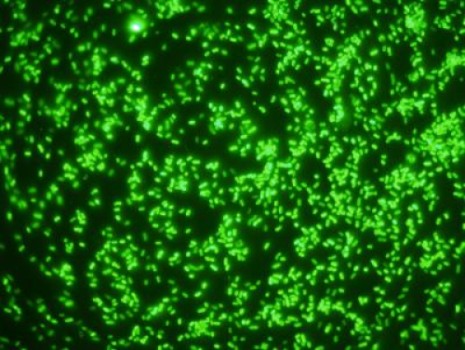Nature:英国科学家披露肠道细菌消化膳食纤维过程
英国约克大学结构生物学实验室的研究人员与加拿大、美国和瑞典的研究团队展开协作,揭示出了我们的肠道细菌代谢水果和蔬菜中的复合膳食碳水化合物的机制。相关文章发表于2014年1月19日的《Nature》杂志上。

Nature:英国科学家披露肠道细菌消化膳食纤维过程
在人类的肠道中居住着数万亿的细菌——个体内平均的细菌细胞数量是人类细胞数量的大约10倍。被称作为“微生物群”的这些细菌对人体健康起着至关重要的作用:它们是我们代谢和健康的关键。
研究小组揭示出了一组叫做卵形拟杆菌(Bacteroides ovatus)的肠道细菌消化木葡聚糖(xyloglucans)的机制。这些糖类接近于包括莴苣、洋葱、茄子和西红柿在内的膳食水果和蔬菜干重的25%。
约克大学化学系结构生物学实验室的研究人员及国际合作者们,针对一些特异性酶的精确功能开展了详细的结构和机制研究。研究工作进一步揭示了哪些生物体可以及不可以消化某些水果和蔬菜,以及卵形拟杆菌“有益菌”是如何执行它们的功能。
了解这些细菌消化复合碳水化合物的机制,将推动针对广泛的营养问题展开研究。其中包括对益生元(prebiotics,是有益细菌的粮食,作为一种食品补充剂可刺激有益细菌生长,促进肠道健康))和益生菌(probiotics,投入后通过改善人体肠道菌群生态平衡而发挥有益作用,达到提高人体健康水平和健康佳态的活菌制剂及其代谢产物)的研究。
约克大学的Gideon Davies教授说:“尽管我们是杂食性动物,然而没有肠道细菌的帮助人类根本无法消化复合植物物质。这项工作正在帮助我们了解这一过程。”
“这项研究有可能超越人类营养学领域对商业和工业均造成影响。研究一些酶分解植物物质的机制与开发出环保的能源诸如生物燃料也直接相关,”Davies说。
原文摘要:
A discrete genetic locus confers xyloglucan metabolism in select human gut Bacteroidetes
Johan Larsbrink, Theresa E. Rogers, Glyn R. Hemsworth, Lauren S. McKee, Alexandra S. Tauzin, Oliver Spadiut, Stefan Klinter, Nicholas A. Pudlo, Karthik Urs, Nicole M. Koropatkin, A. Louise Creagh, Charles A. Haynes, Amelia G. Kelly, Stefan Nilsson Cederholm, Gideon J. Davies, Eric C. Martens & Harry Brumer
A well-balanced human diet includes a significant intake of non-starch polysaccharides, collectively termed ‘dietary fibre’, from the cell walls of diverse fruits and vegetables. Owing to the paucity of alimentary enzymes encoded by the human genome, our ability to derive energy from dietary fibre depends on the saccharification and fermentation of complex carbohydrates by the massive microbial community residing in our distal gut. The xyloglucans (XyGs) are a ubiquitous family of highly branched plant cell wall polysaccharides whose mechanism(s) of degradation in the human gut and consequent importance in nutrition have been unclear. Here we demonstrate that a single, complex gene locus in Bacteroides ovatus confers XyG catabolism in this common colonic symbiont. Through targeted gene disruption, biochemical analysis of all predicted glycoside hydrolases and carbohydrate-binding proteins, and three-dimensional structural determination of the vanguard endo-xyloglucanase, we reveal the molecular mechanisms through which XyGs are hydrolysed to component monosaccharides for further metabolism. We also observe that orthologous XyG utilization loci (XyGULs) serve as genetic markers of XyG catabolism in Bacteroidetes, that XyGULs are restricted to a limited number of phylogenetically diverse strains, and that XyGULs are ubiquitous in surveyed human metagenomes. Our findings reveal that the metabolism of even highly abundant components of dietary fibre may be mediated by niche species, which has immediate fundamental and practical implications for gut symbiont population ecology in the context of human diet, nutrition and health.

